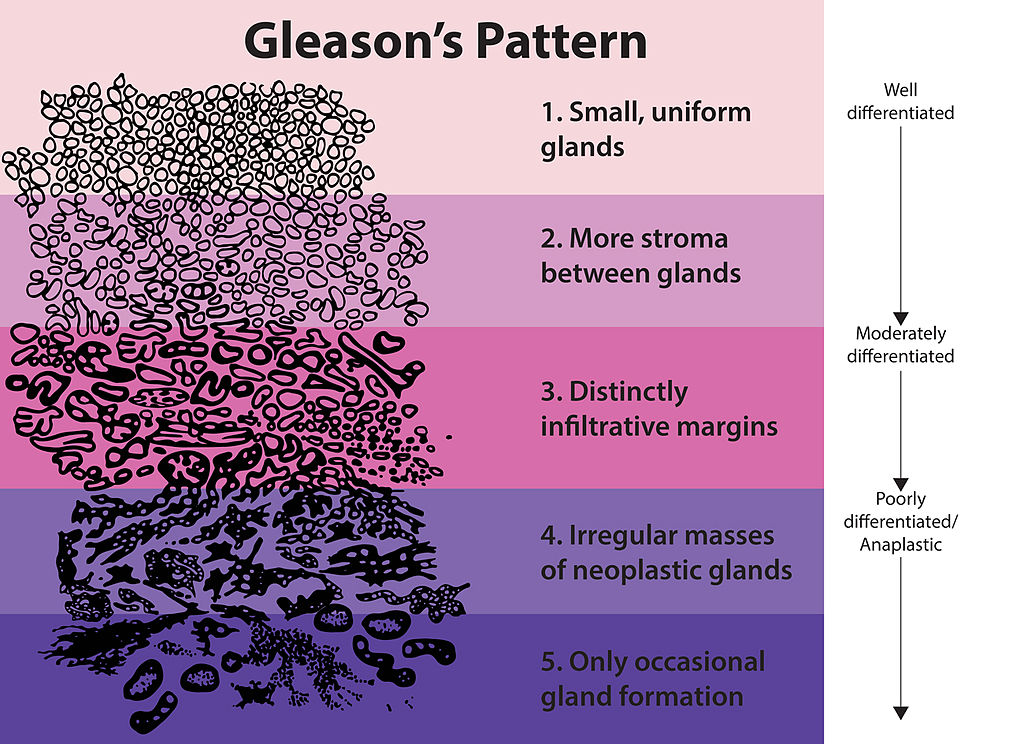Men’s Health: It’s Not Nuts to Talk About Your Prostate
Once a man reaches the age of 40, lots of things change. You can no longer eat what you want without working out, your kids can probably beat you at basketball and you may start having some trouble urinating.
Activ Doctors Online’s US Medical Director Dr. Howard Zahalsky weighs in on men’s health during a series of webinars discussing prostate health and prostate cancer.
Benign Prostatic Hypertrophy (BPH)
If you are noticing that you need to go more frequently or are having difficulty getting started, an enlarged prostate could be to blame. The prostate is a little gland that sits below the bladder. Its job is to lubricate the urethra. Over the years, testosterone causes the prostate to grow. As it grows, it squeezes both the urethra and bladder, making it hard for the bladder to fully empty because of pressure on the urethra, and you have to go more often because the bladder has less room.
Diagnosing BPH
The test used to diagnose benign prostatic hypertrophy is also the reason most men avoid the doctor after the age of 40 – the time-honored tradition of the rectal exam.
Though disconcerting, the test itself is over in a matter of seconds. “Imagine you are picking fruit in the grocery store. Even if you were blindfolded, you could easily tell the difference between two different sized fruits,” explains Dr. Zahalsky.

If you present with symptoms, your doctors can find out exactly how much of a problem your enlarged prostate is by sending you for a urodynamics exam. This tests:
- how much urine you produce – people with an enlarged prostate have a smaller bladder that cannot empty completely
- velocity of flow – people with a normal urethra are able to pee at a much faster rate than those with an enlarged prostate
- rate over time – an enlarged prostate will cause a person to urinate slowly over a long period of time.
Treatment of BPH
Alpha blockers
These medications work by relaxing the muscles along the urethra, allowing it to open even though your prostate may be squeezing. They do not actually solve the underlying problem, but they are able to relieve the symptoms. These medicines can also lower blood pressure, in addition to some other side effects such as dizziness and fainting, rapid heartbeat or chest pain.
Over time, because it’s not actually solving the problem, they will become less effective as the prostate begins to grow.
Microwave TURP
Microwave transurethral resection of the prostate (TURP) is the most modern treatment available to treat benign prostatic hypertrophy. A fine filament is traced through the urethra and held in place with a balloon. Microwaves are sent through the filament to essential “cook” the prostate from the inside, reducing the size.
Wait, WHAT?!? How could that possibly be better?
“It is not completely painless, but it is much, much less painful than traditional methods that involve scraping and cutting with a resectoscope,” explains Dr. Zahalsky, “And, in 90-minutes or less, you leave the office with (usually) complete resolution of your symptoms, with no bleeding and no follow up needed.”
Prostate Cancer
Since prostate cancer is usually contained in a small, isolated area, versus the entire prostate, it doesn’t have a lot of the symptoms of prostatic hypertrophy.
“Returning to the fruit analogy, imagine instead of comparing size, you’re comparing freshness,” explains Dr. Zahalsky, “You can almost certainly tell the difference between a fresh fruit and a rotten fruit.”

There are currently no methods that can prevent prostate cancer. The best prevention is early detection and treatment.
Diagnosing Prostate Cancer
Starting at age 40, it is recommended that men get a yearly rectal exam to look for prostate cancer. A doctor may be able to feel an abnormal growth of the prostate. This test has many limitations – it cannot detect abnormal growths that are not on the rectal side of the prostate, and it cannot detect small cancers deep within the prostate.
Fortunately, most – though not all – prostate cancers do start on the back of the prostate where it can be detected by a rectal exam.
The prostate-specific antigen test (PSA) identifies a chemical released into the blood by prostate cancers. The test does have limitations – not all prostate cancers produce this antigen, and if you have benign enlargement that reaches a substantial size, it can cause increased PSA. Additionally, a “normal” PSA varies widely across ages groups and ethnicities.
It is recommended that you have your PSA checked yearly starting at age 50, or earlier if you are in a high risk group. This group includes African American, who tend to have a higher average PSA in general, and those that have a family history of prostate cancer.
Additionally, large spikes in PSA, even if they are within the “normal range” are concerning and warrant further inspection, either through an ultrasound or – more commonly – an MRI and biopsy.
Not all Cancers are Created Equal
Prostate cancers are evaluated and ranked using the Gleason Scale. The pathologist will take two samples of prostate cells and rank them. The combined of these two samples is the total score for the cancer.

This score helps in determining the best course of treatment for the cancer.
Treatment for Prostate Cancer
Radical Prostatectomy
Surgical removal of the entire prostate. While this removes the cancer cells, it also removes some of the cells around it, which can damage the nerves and cause at least temporary erectile dysfunction and bladder incontinence.
Radiation Therapy
A very focused beam of radiation to “burn” the cancer cells. The procedure is painless, and uses a small doses of radiation over several treatments. It is much less invasive, but can still result in nerve damage.
Lupron
Sometimes people are not able to tolerate either surgery or radiation, or if the prostate cancer has already spread. Lupron is a chemical that prevents your body from processing testosterone, essentially starving the cancer. It is not a cure, and has several side effects, because testosterone is used in several other processes.
Playing the Odds
Prostate cancer is nearly inevitable, if you live long enough. It is also one of the slower growing cancers. “In fact,” explains Doctor Zahalsky, “if you are diagnosed with prostate cancer at the age of 85, you are more likely to die of old age before the cancer kills you.”
Because of this, experts have suggested that once you reach 70 – 75 years old testing for prostate cancer become optional.
How Activ Doctors Online Can Help
Personal Health Record and Health Tracker
A Personal Health Record you can keep track of all of your doctor recommendations, including any new medications your urologist might start you on.
Our health tracker can keep track of your PSAs so you can see if there are any concerning jumps, even if you switch doctors. According to Dr. Zahalsky:
“Activ Doctors’ revolutionary health measure tracker is something I always recommend to my patients so they can really see how much benefit they’re getting from their medicine and treatments and how much impact their BPH is having in their lives.”
Second Medical Opinion
Prostate cancer can be a complex disease to treat, and there are many opinions about how best to treat it. A second medical opinion could help you better understand your treatment options, make a calculated plan of action for treating the disease and avoid treatments that you may not need.
e-Consultation
Since prostate cancer is so complicated, you’ll have a lot of reasons to talk to your doctors, not all of which require a physical exam or office visit. If your doctors participates, you can conveniently discuss your treatment and symptoms via our secure e-Consultation platform.
